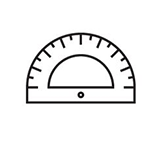벤디안 유자포동물 네미아나 화석(Vendian Cnidarian Nemiana simplex Fossils)-1
| 국내/해외배송 | |
|---|---|
| 배송비 방법 | 택배 |
| 배송비 | 4,000원 (50,000원 이상 구매 시 무료) |
| 수량 |
|
| 상품 정보 | 가격 | 삭제 |
|---|---|---|
| [총 상품금액(수량)] 0 (0개) | ||
일반명 : 벤디안 유자포동물화석(Vendian Cnidarian Fossils)
학명 : Nemiana simplex
분류 : 자포동물문(Phylum Cnidaria) 해파리강(Class Scyphozoa)
지질시대 : Precambrian, Vendian (600 Million Years Old)
해파리크기 : 10~23mm(Medusoids: 10-22 mm across)
발견지 : Fossil Site: White Sea
Nemaia Vendian Cnidarian Fossils
Cnidaria were some of the earliest fossils recognized as animals. This death assemblage of Vendian cnidarians (medusoids) predate the Cambrian Explosion by tens of millions of years. Many of the early attempts at diversity occurred during this late Proterozoic timeframe, and are represented in the fossil record, for example, in the Ediacara Biota of the
Ediacaran Fossils of the
The association of these fossils within the Tree of Life remains controversial. Some seem to have affinity to cnidarian, worm, or arthropod morphologies. Others resemble algal or lichen forms, or huge protozoans. Others some seem to represent alien kingdoms of life that left no descendants, and still others appear as uninterpretable bumps and blobs. Vendian rocks are also found to contain contain ichnofossils fossils probably made by worm-like animals traveling on a muddy sea floor.
Cyclomedusa is among the most highly represented members of the Ediacaran Biota, with specimens known from Neoproterozoic strata worldwide, including Ediacara (Australia), Norway, the Charnwood Forest in England, Northern China, Olenek, Ural Mountains and the White Sea Summer Coast of Russia, Newfoundland and Northwest Canada, Podolia in the Ukraine), Sonora Mexico. Early interpretations of Cyclomedusa a jellyfish. Others postulated benthic creature possibly an octacorallian or sea pen, and more recently, a microbial colony.

















 확대보기 및 상세정보
확대보기 및 상세정보